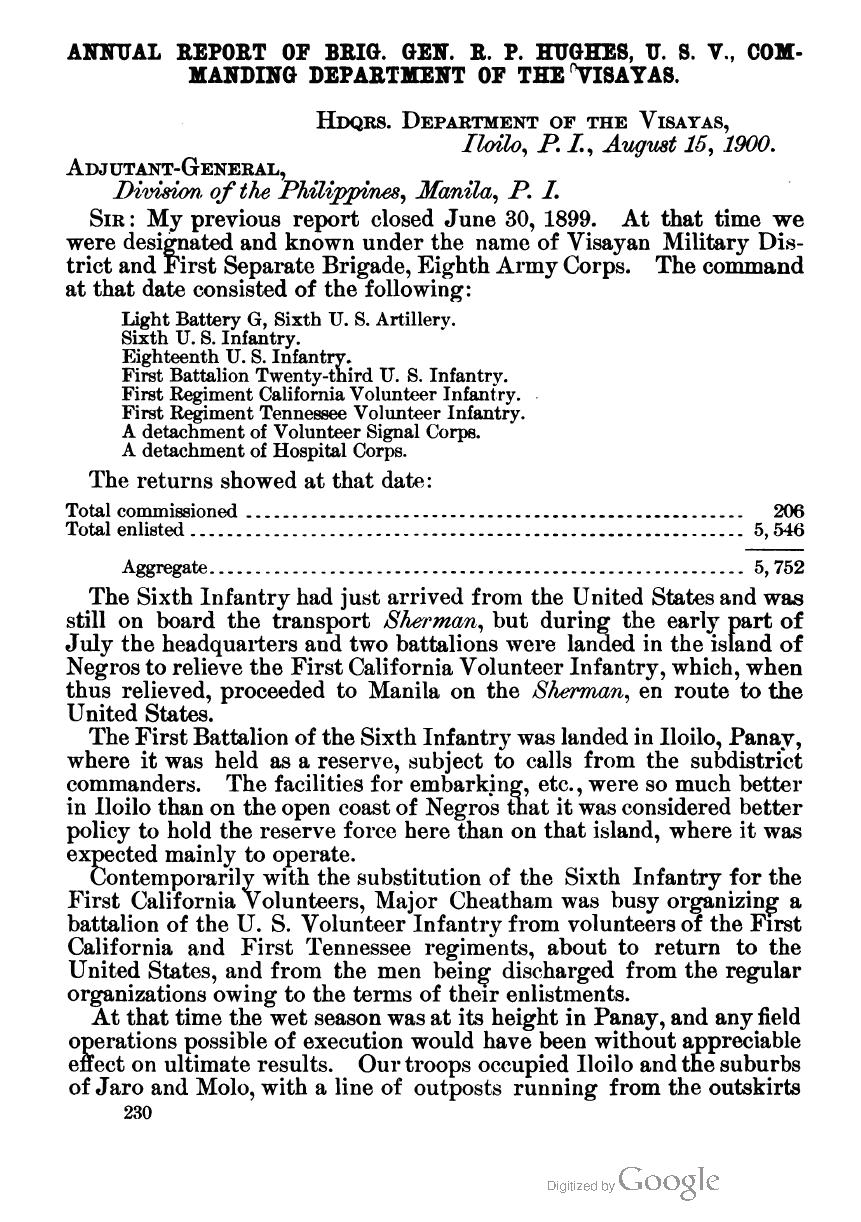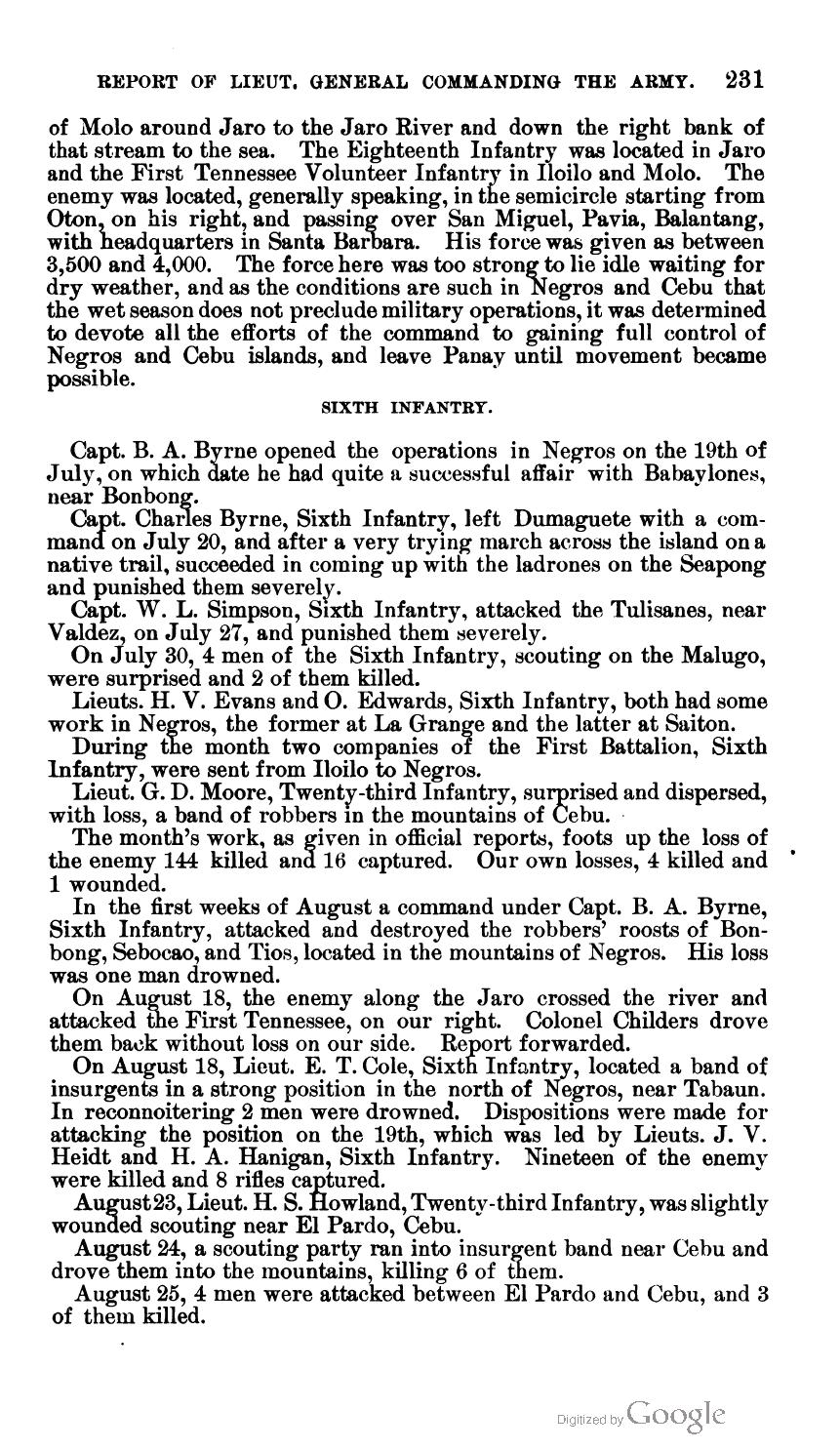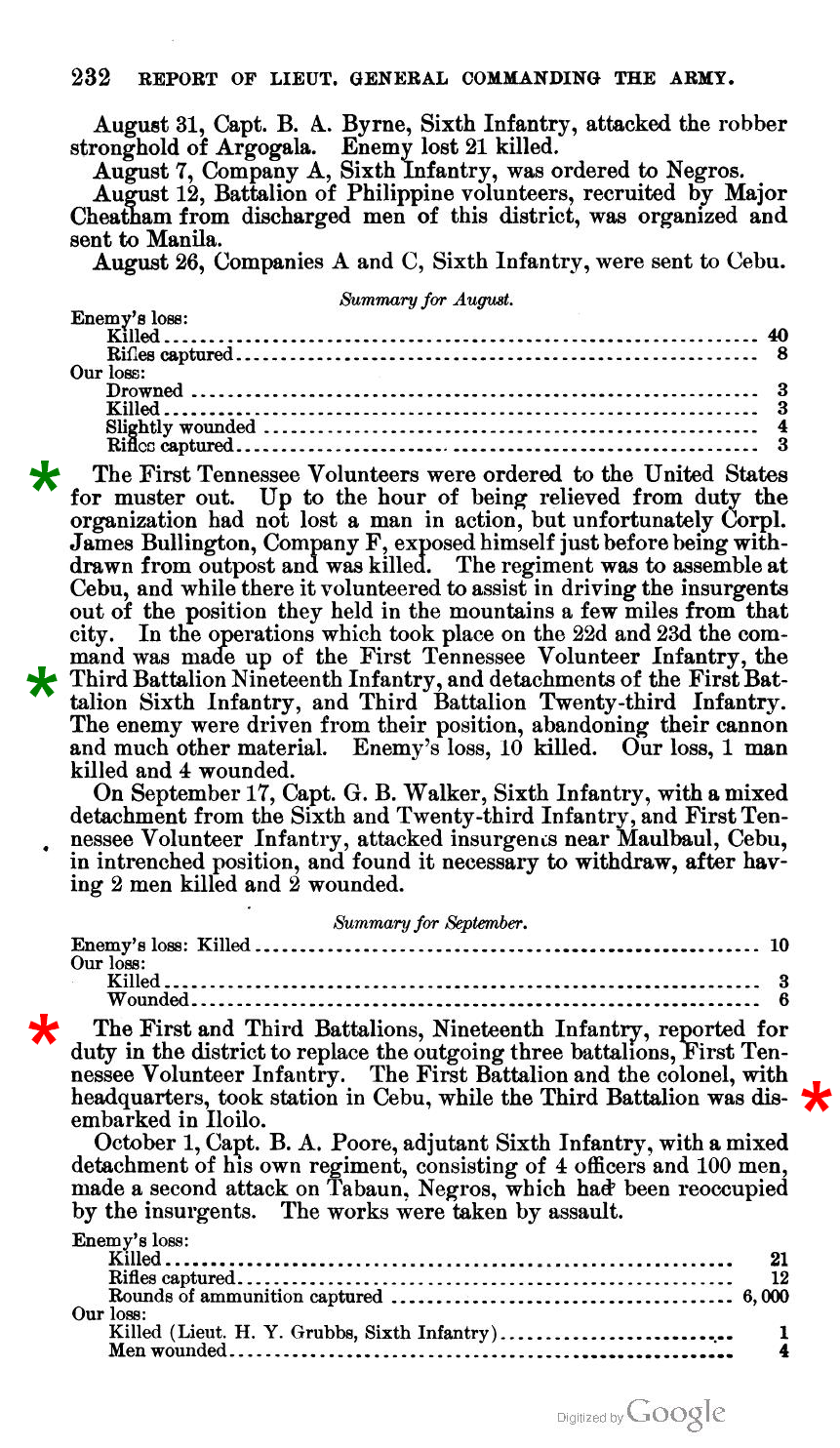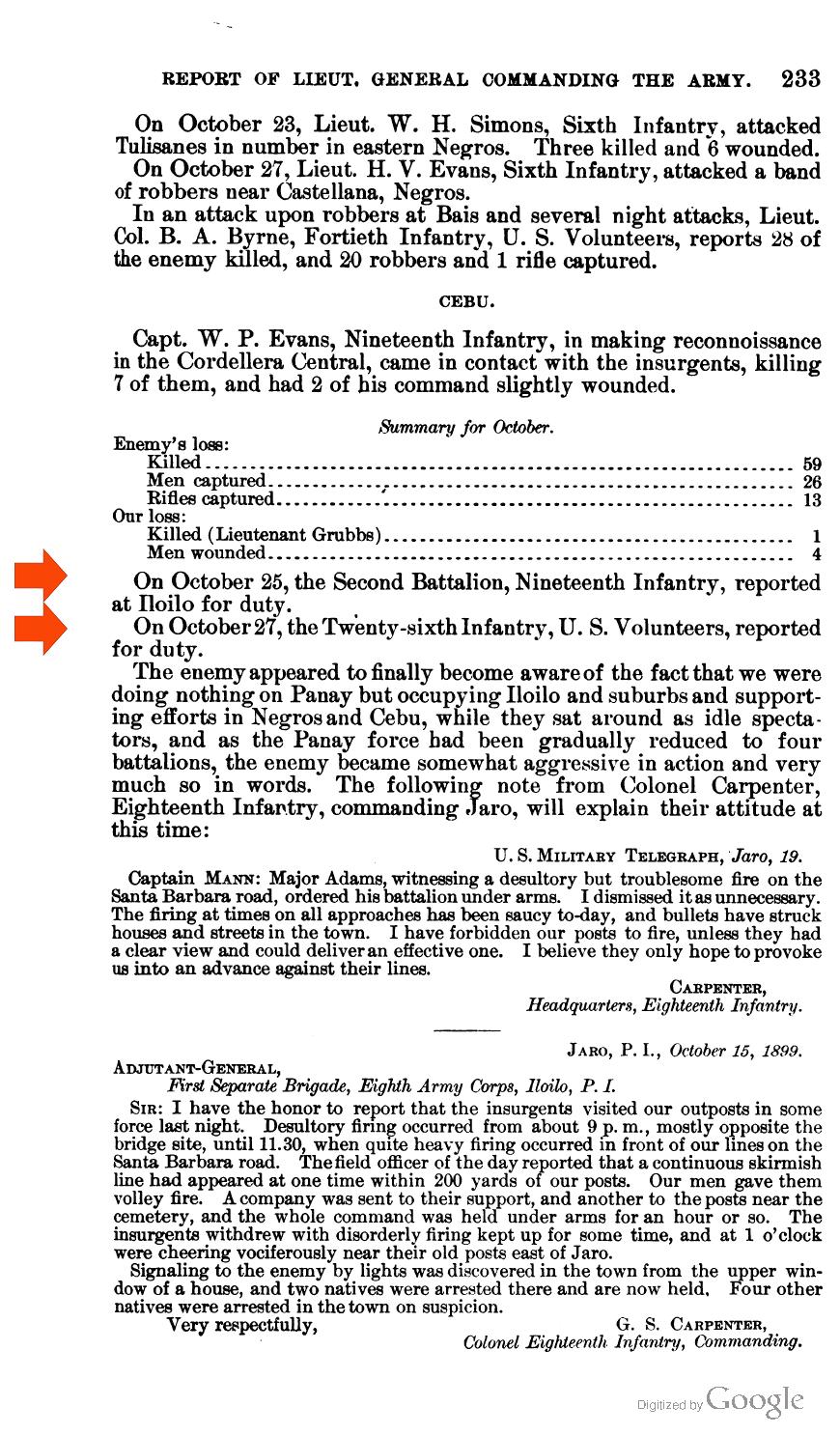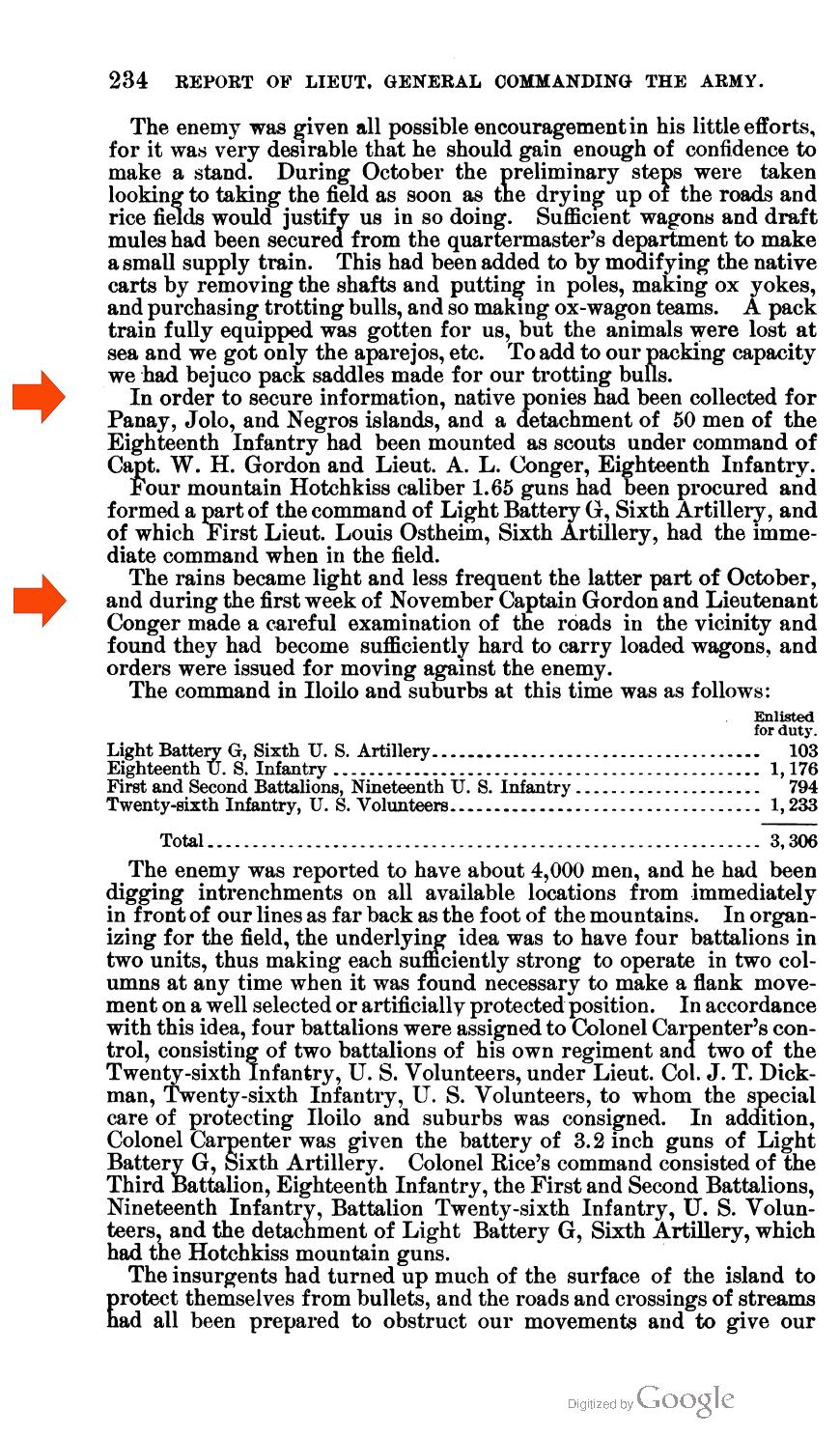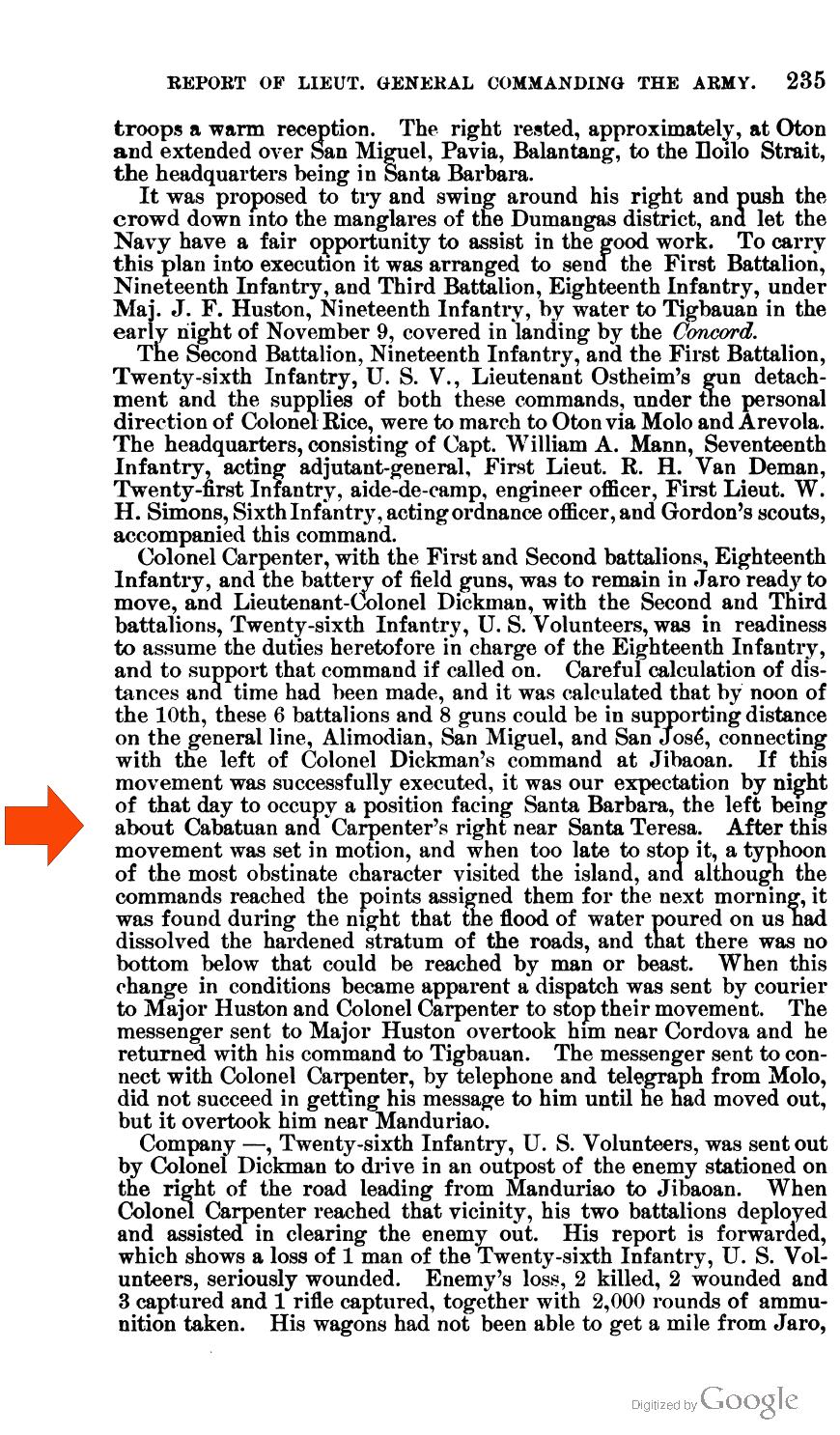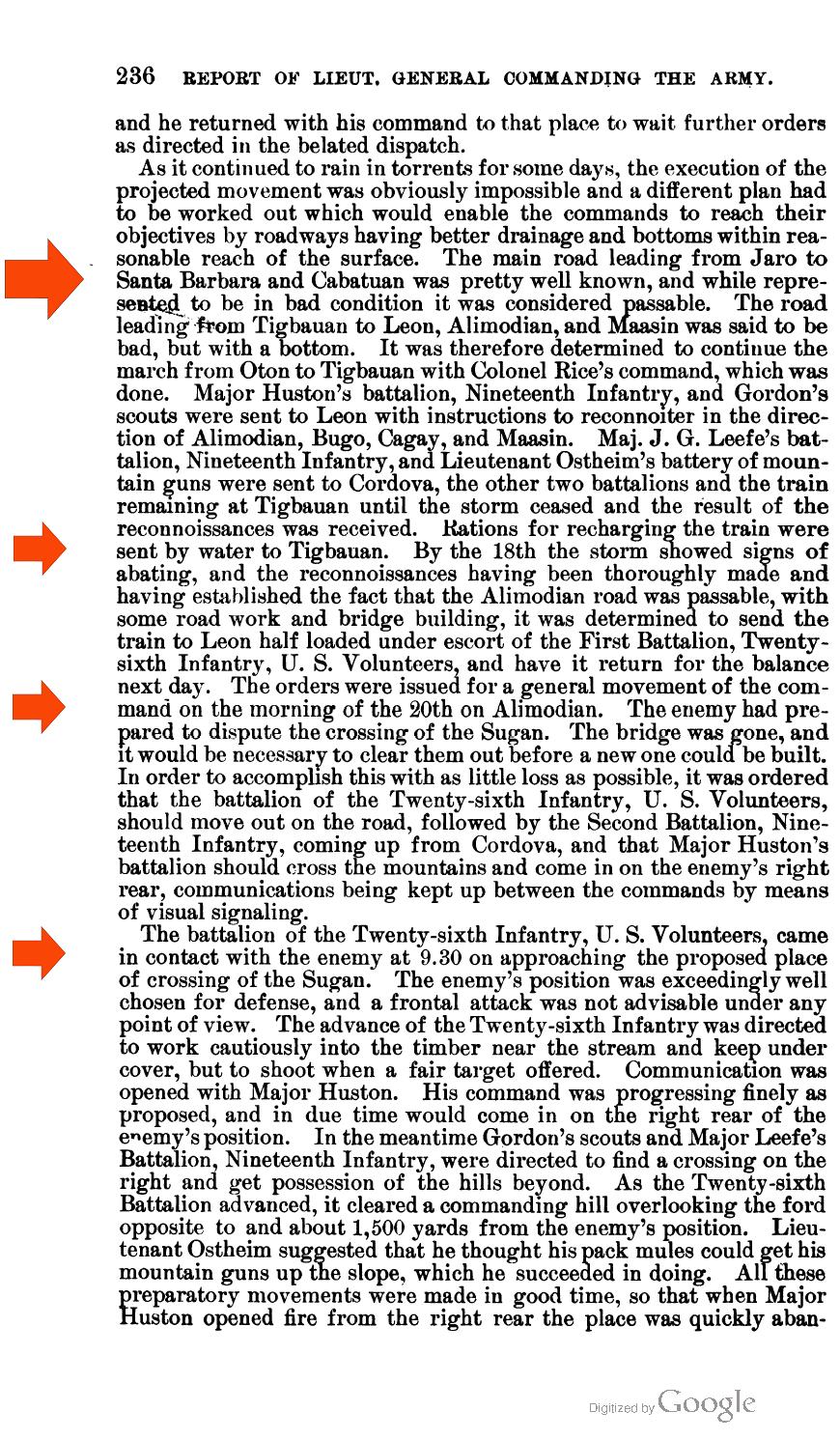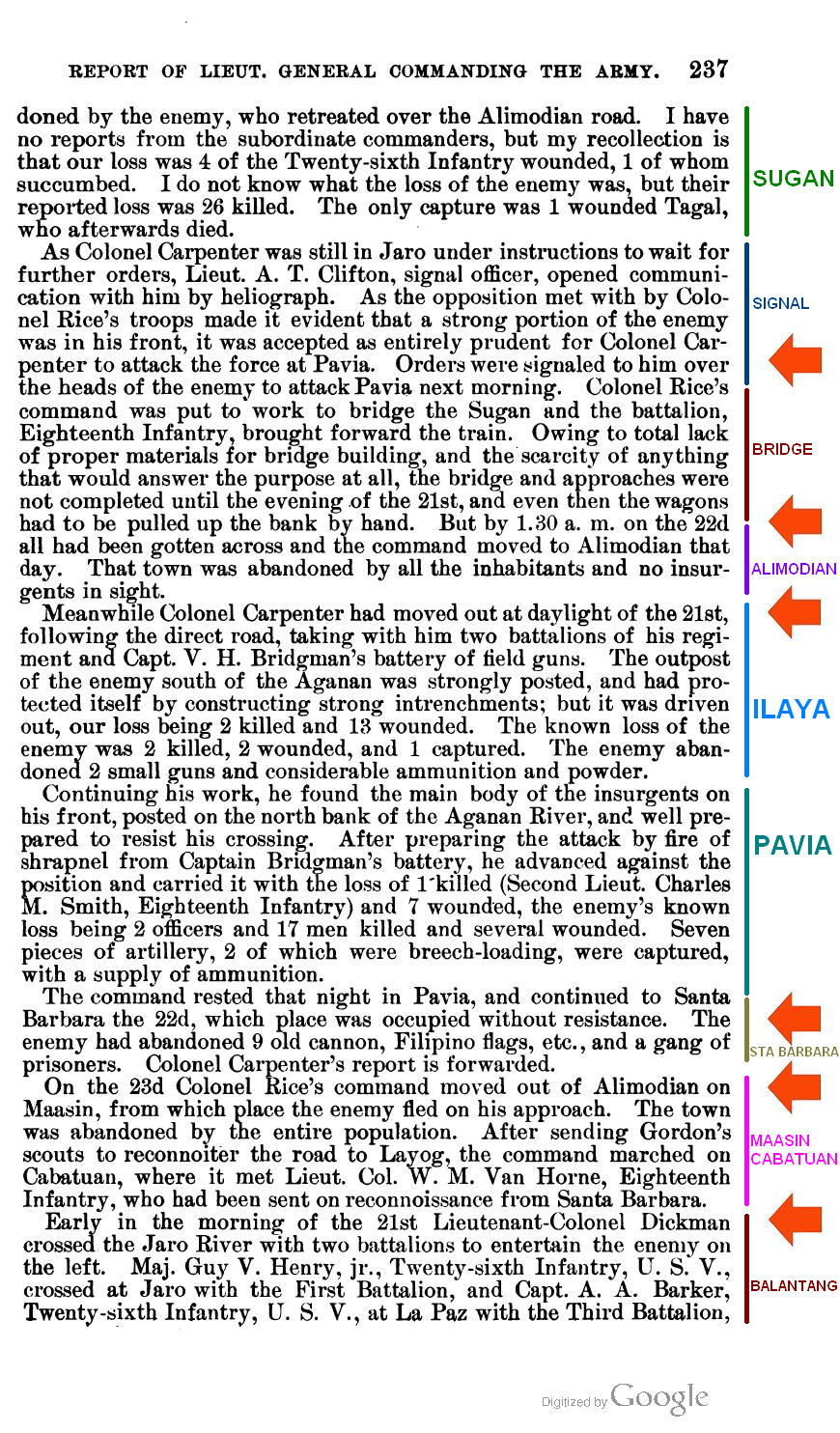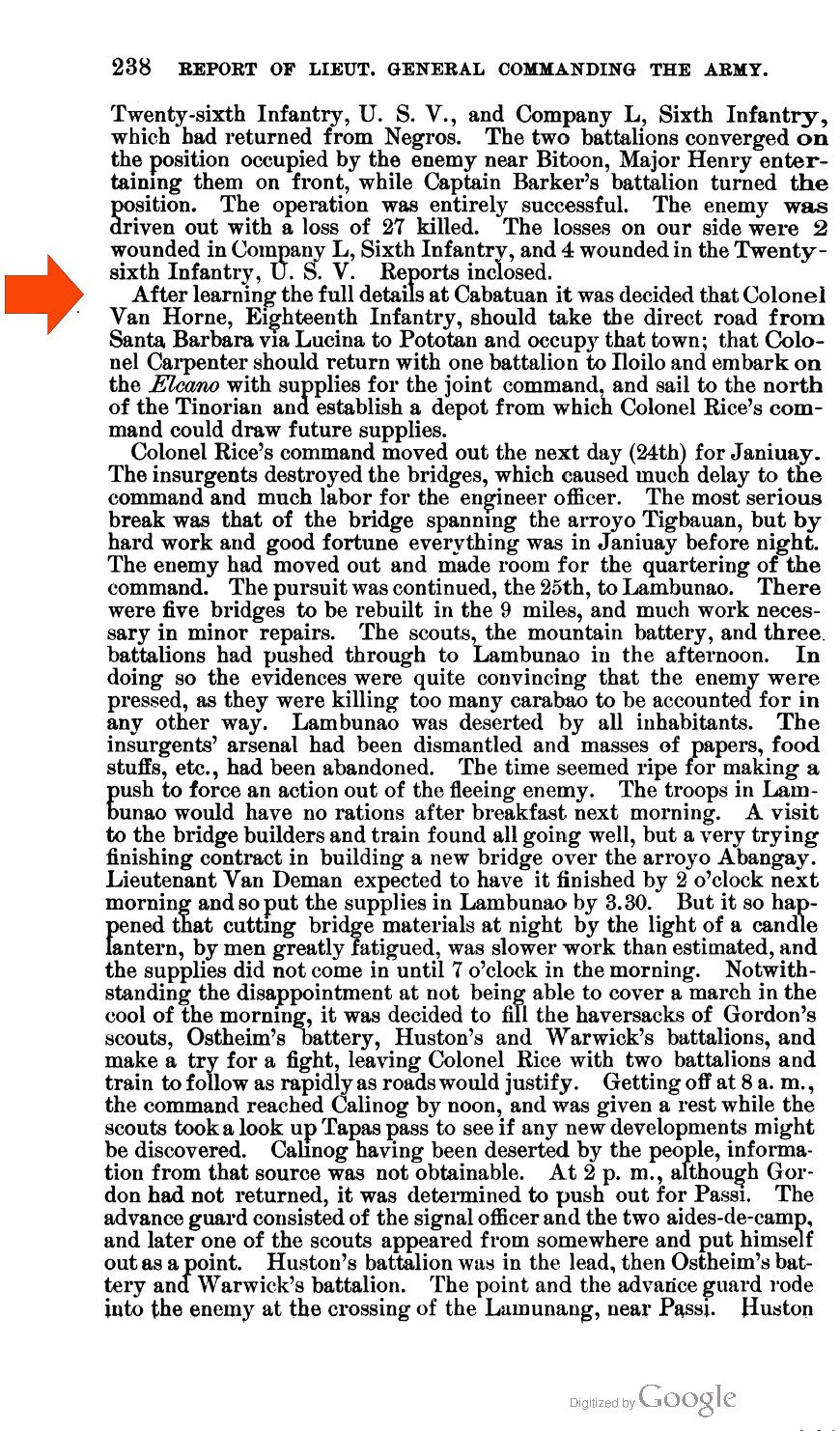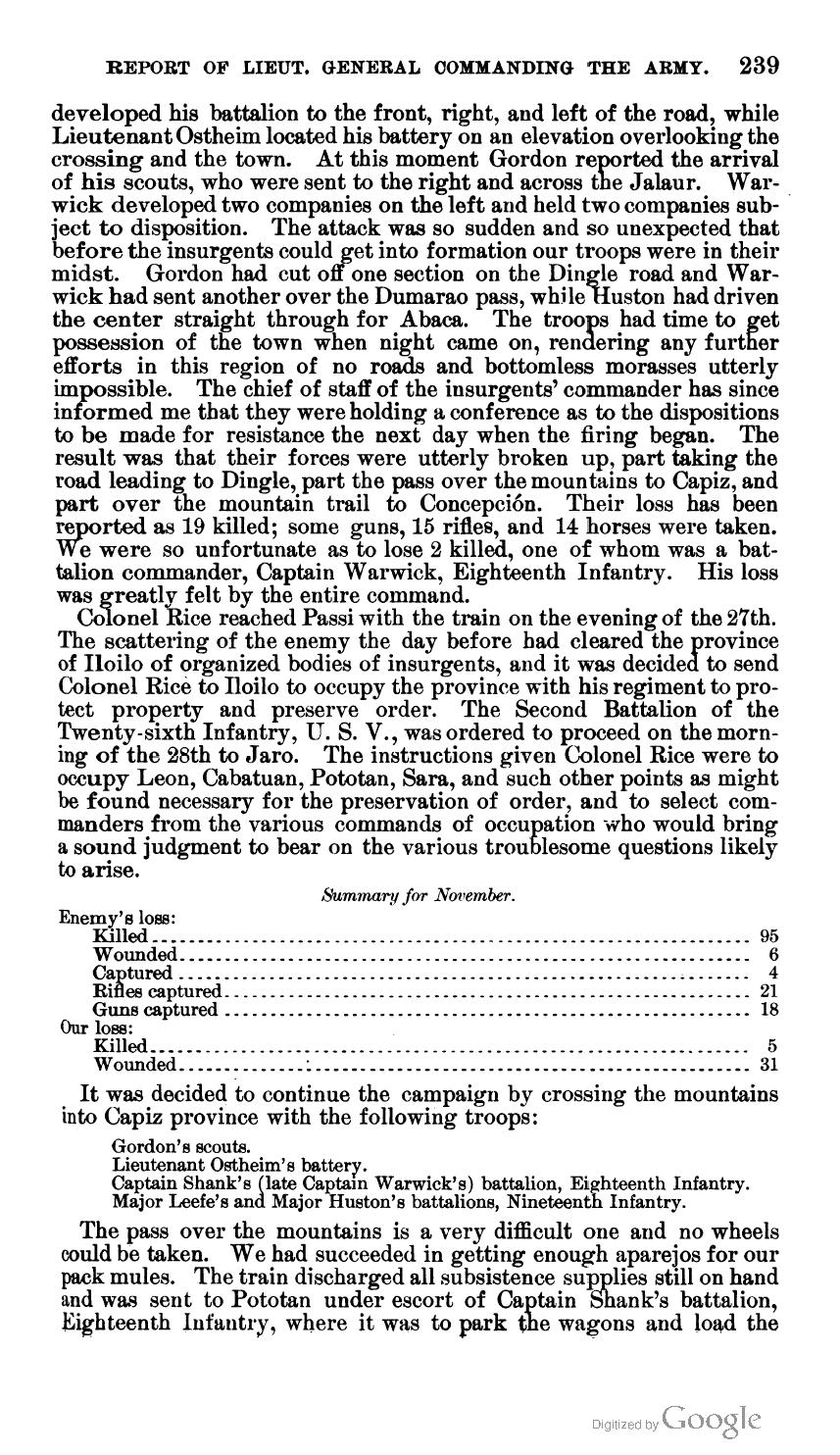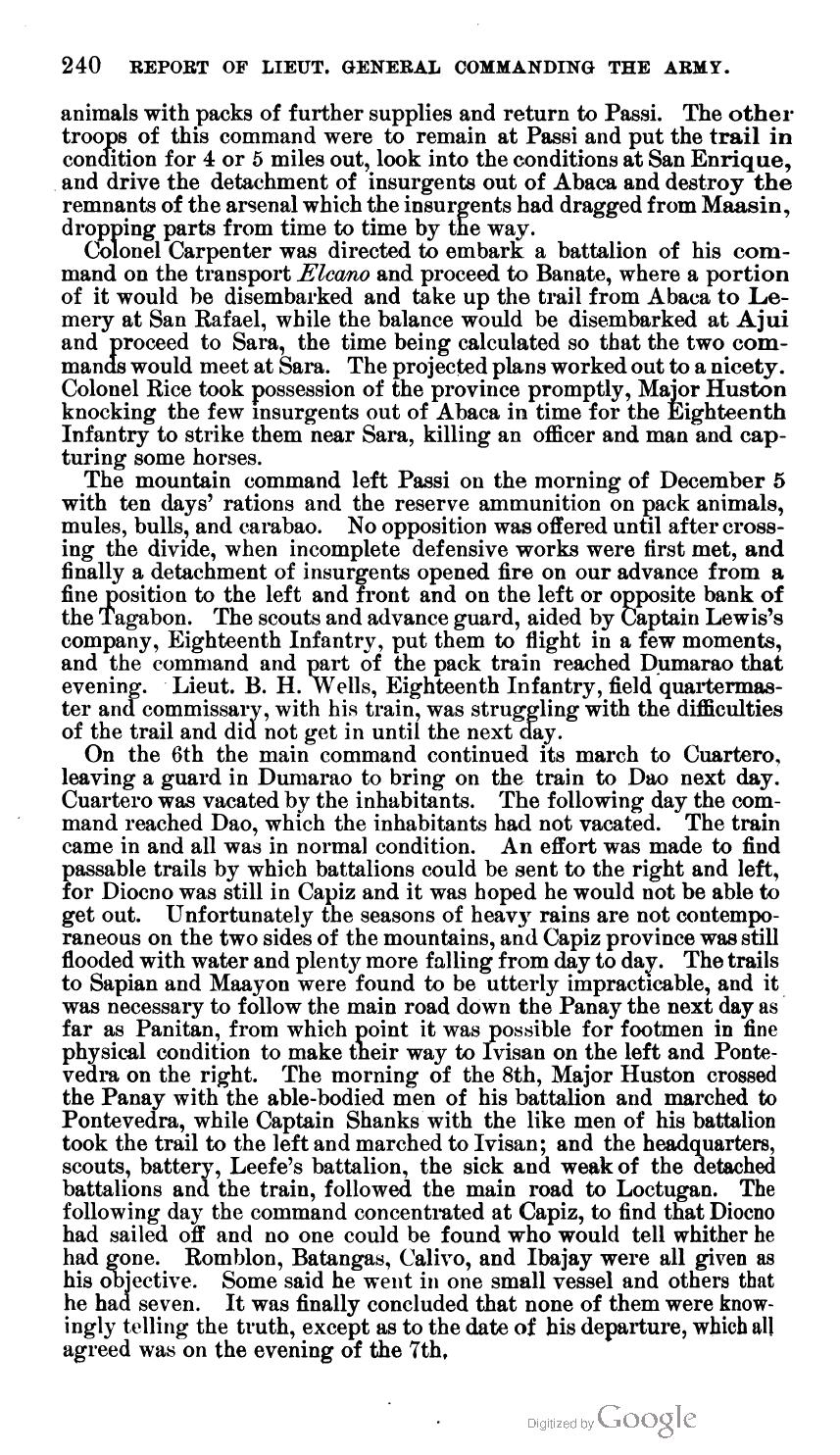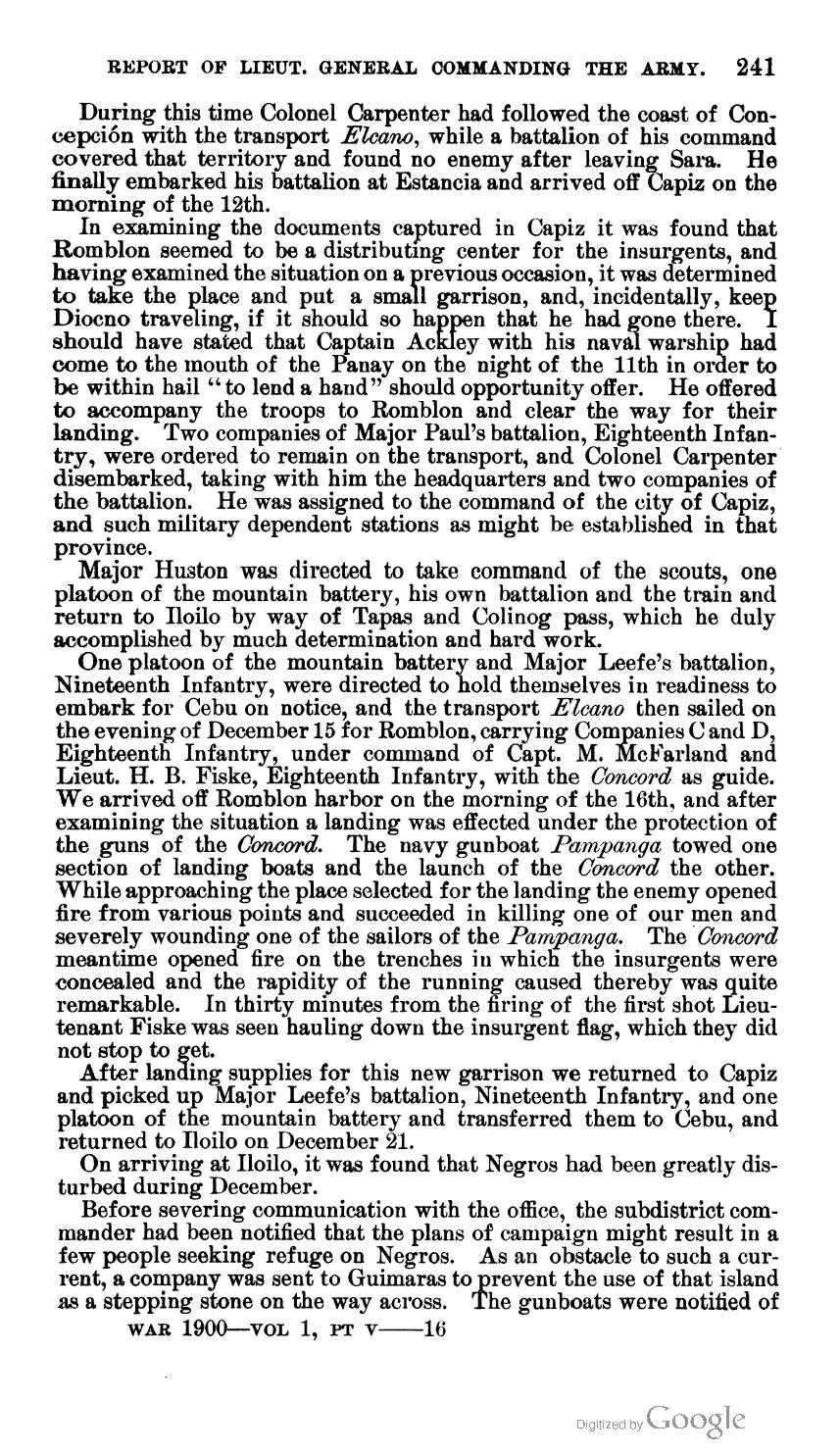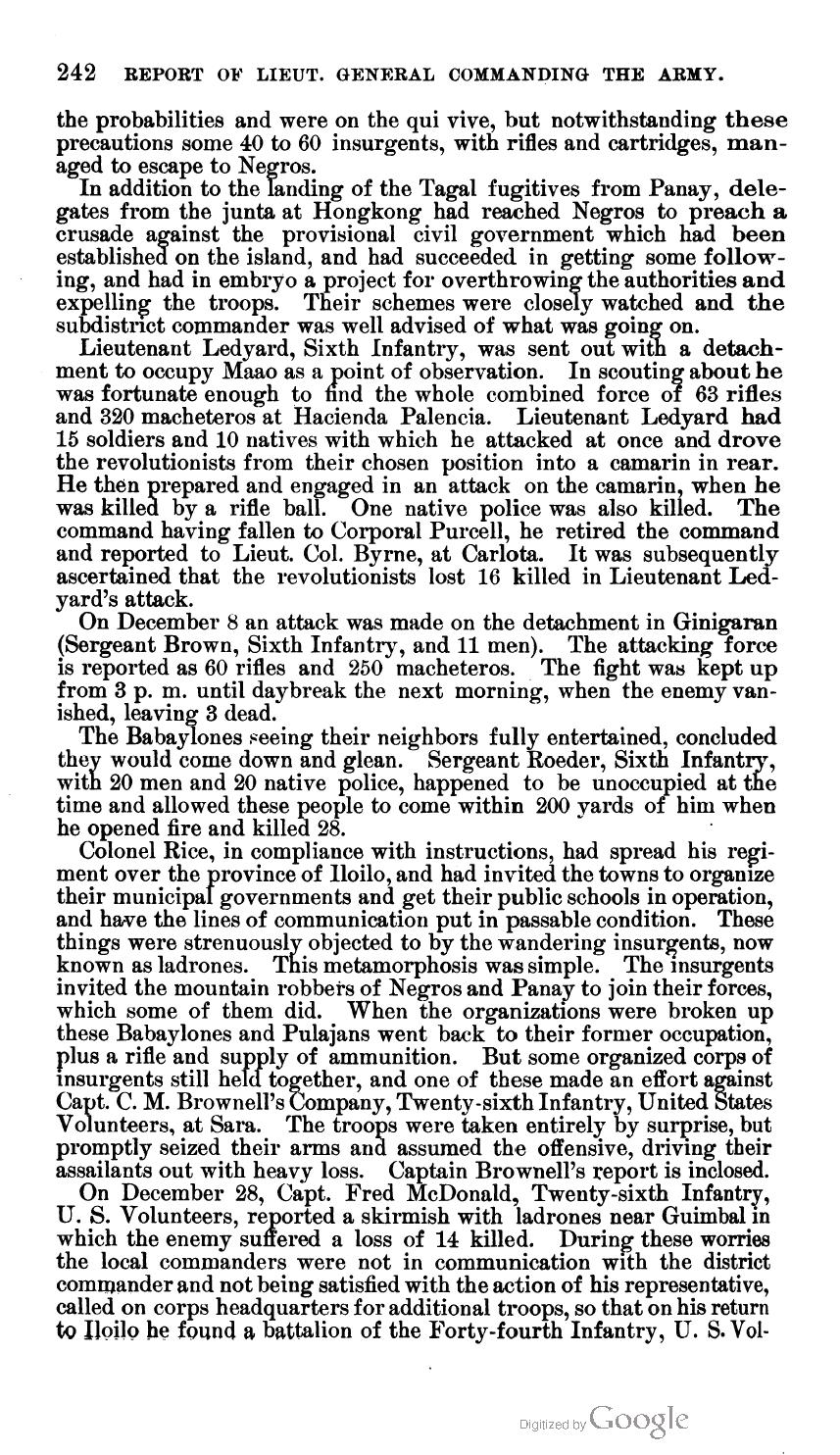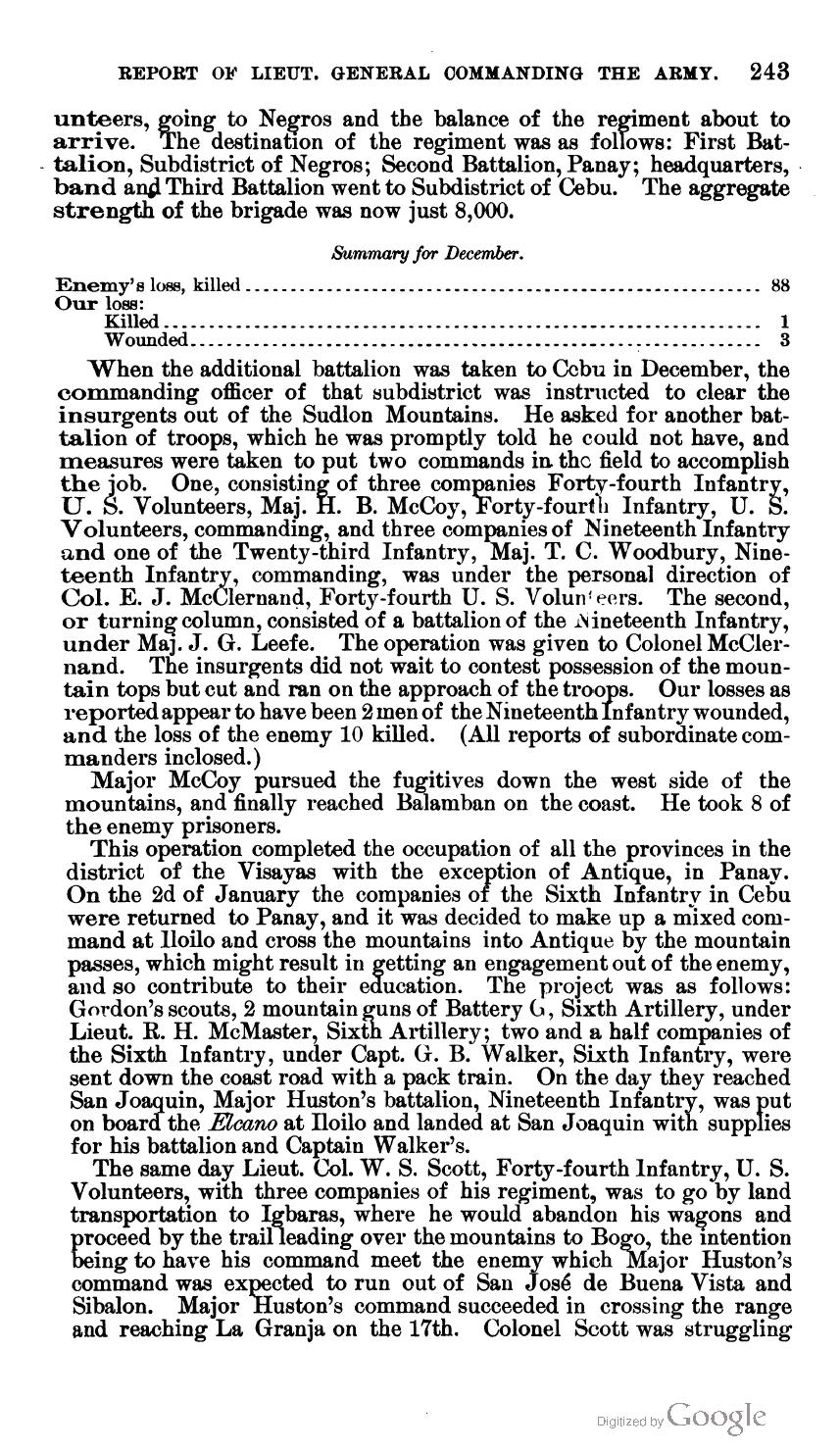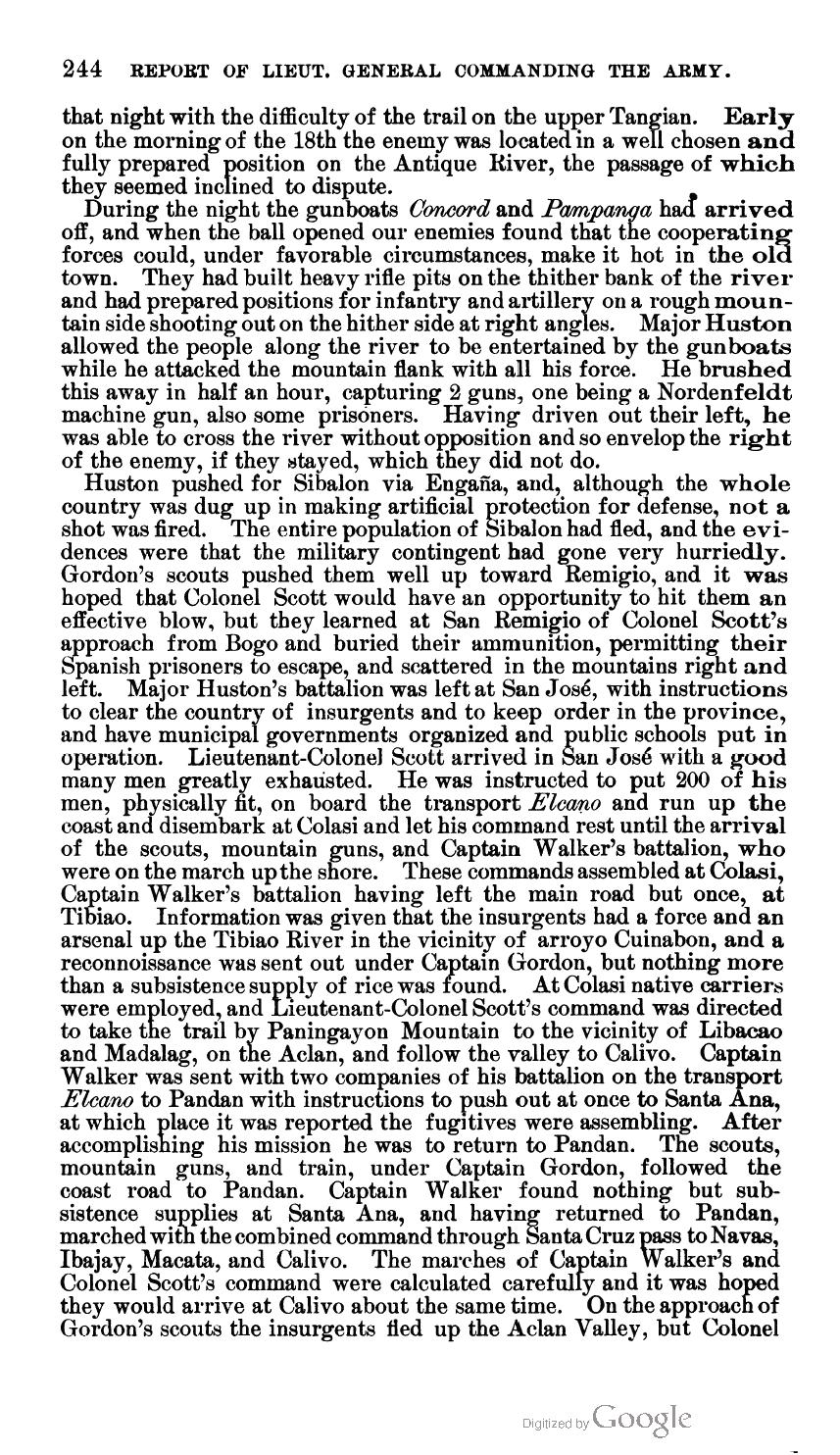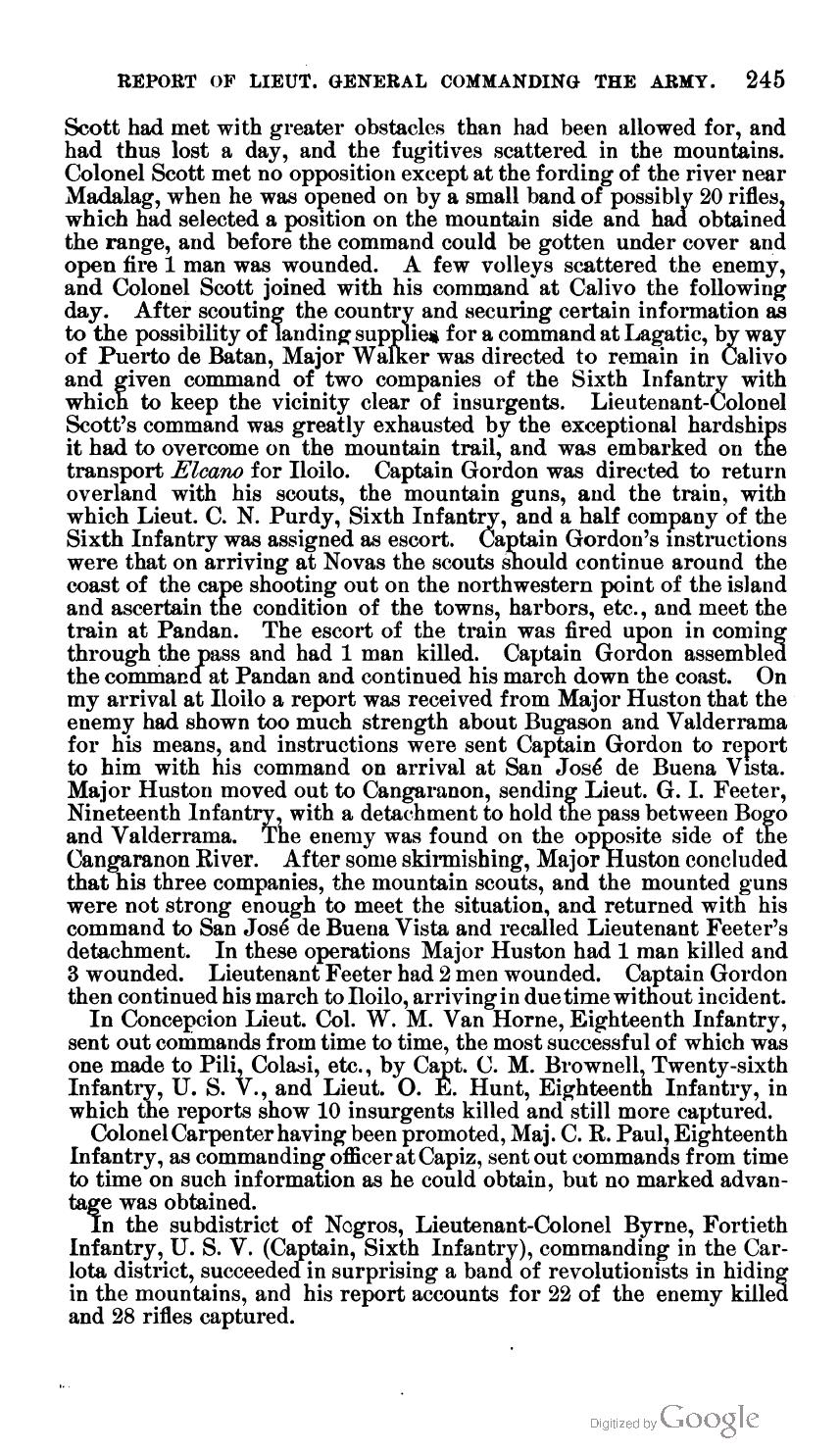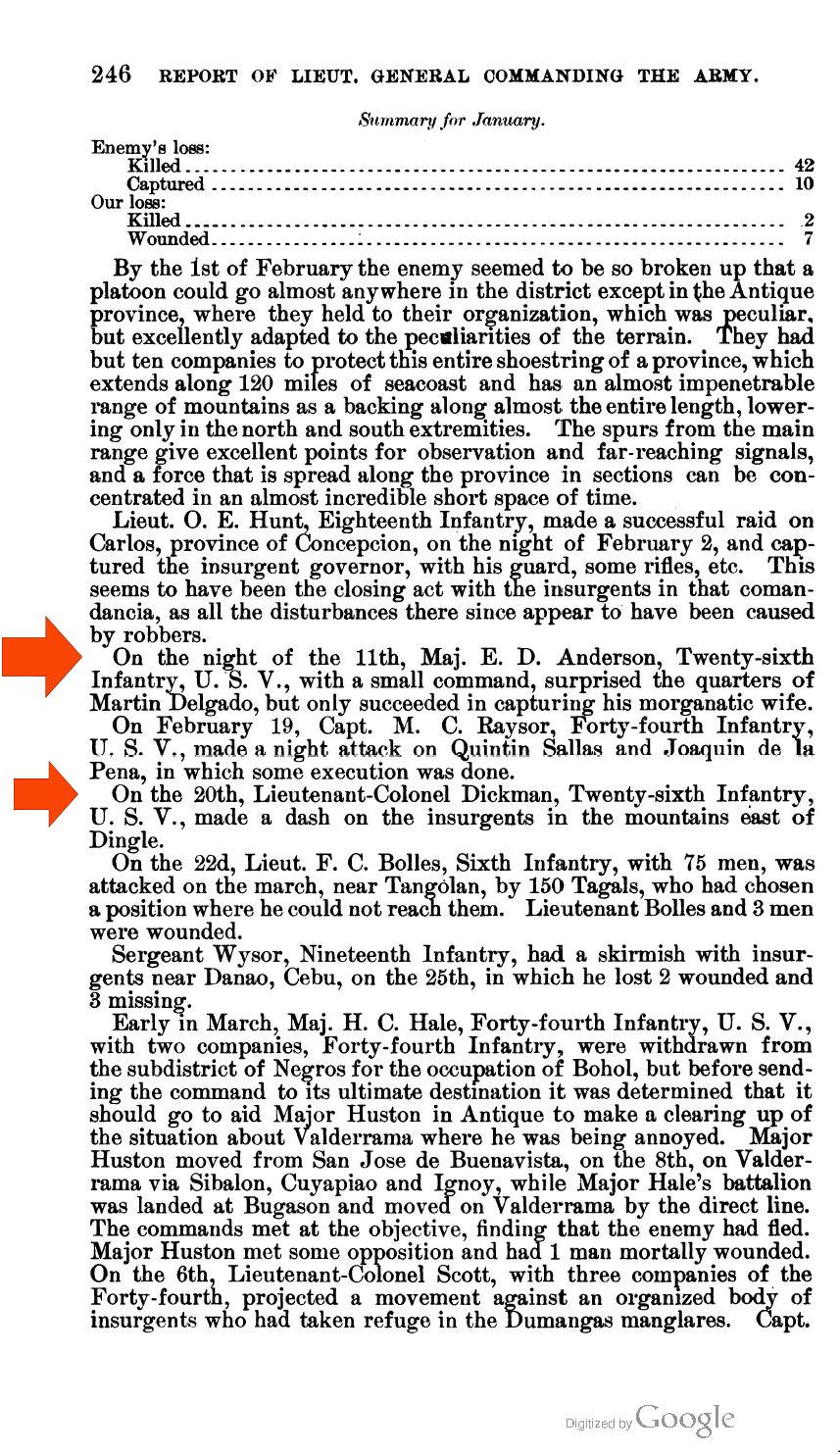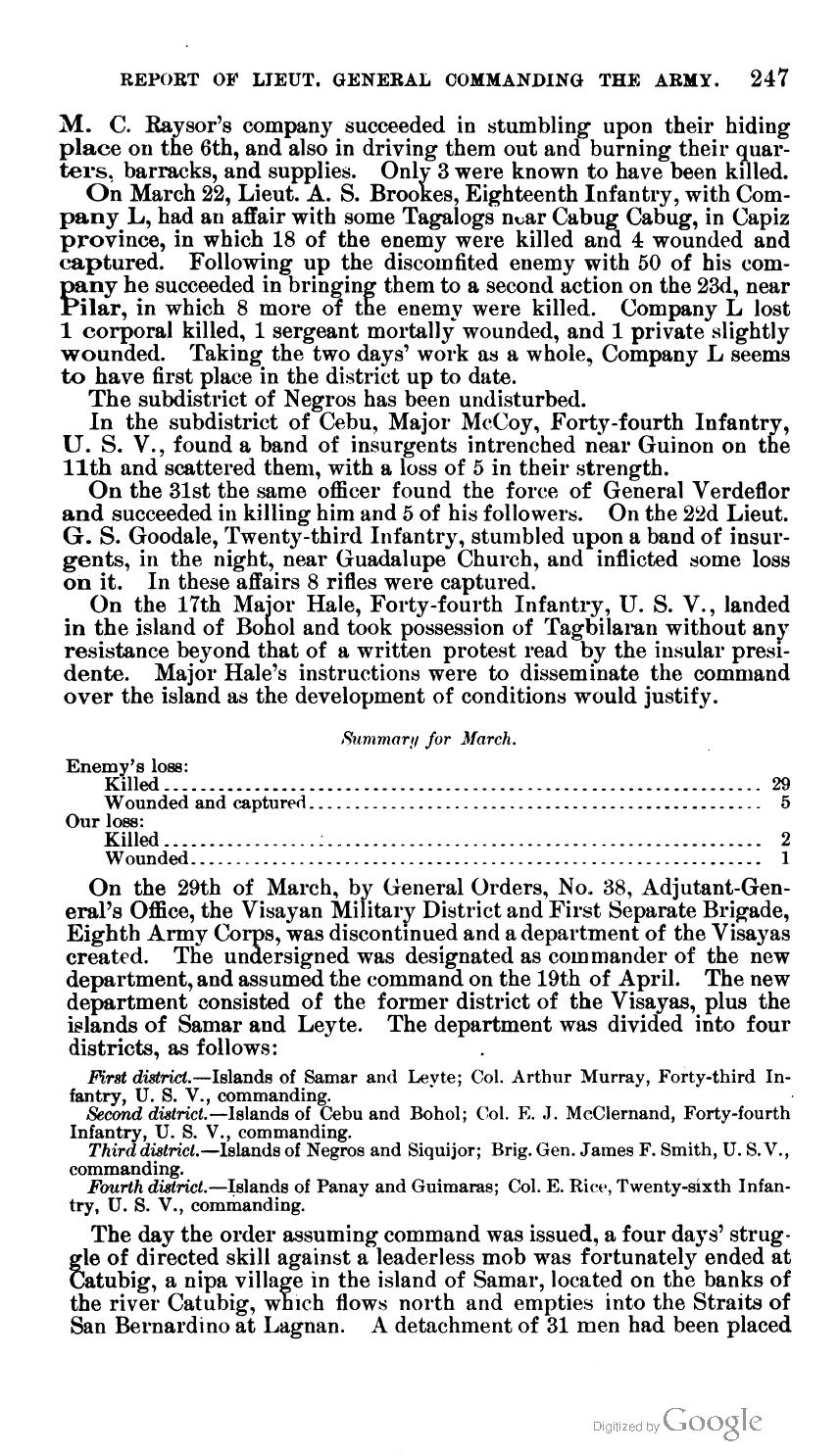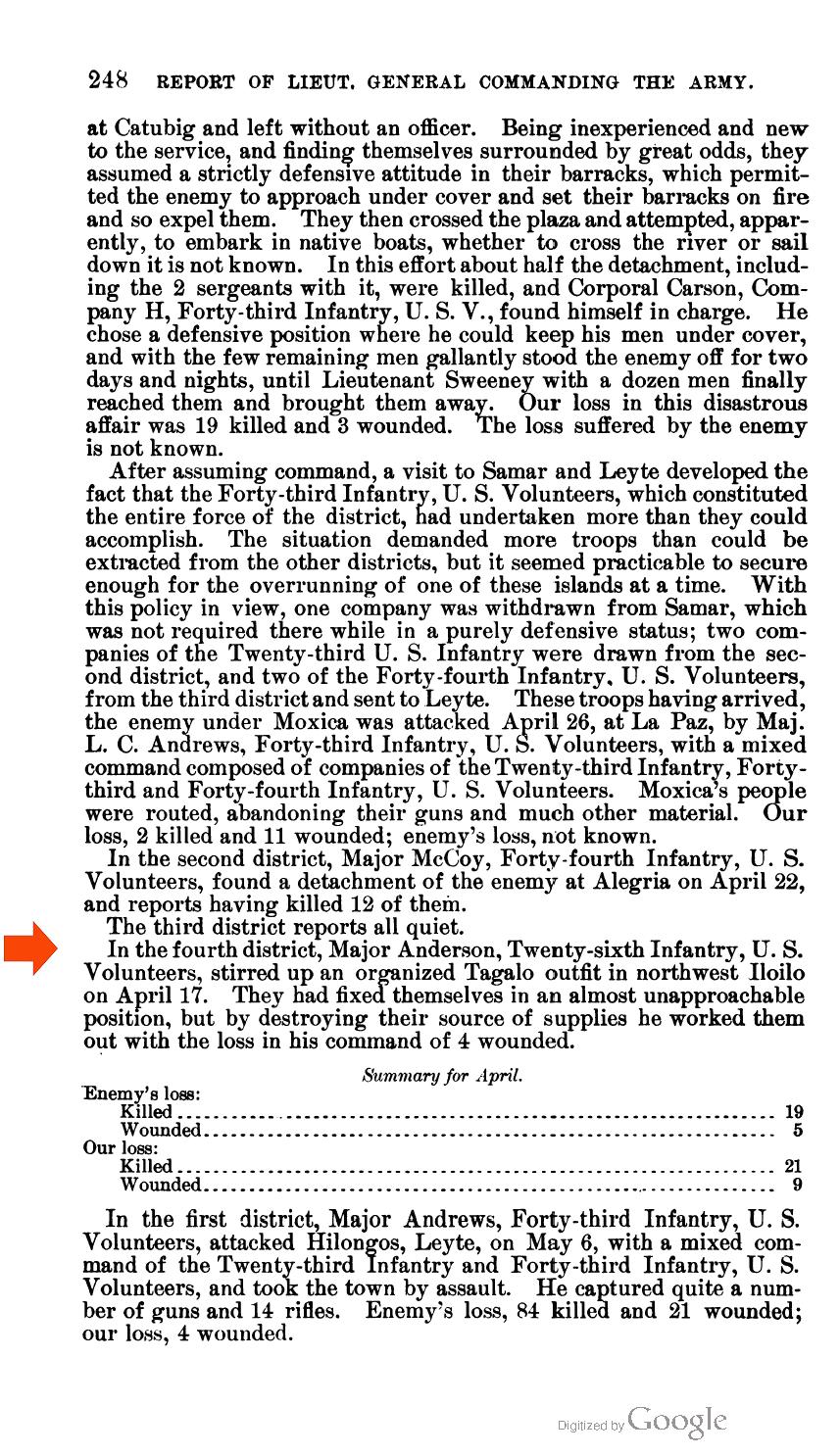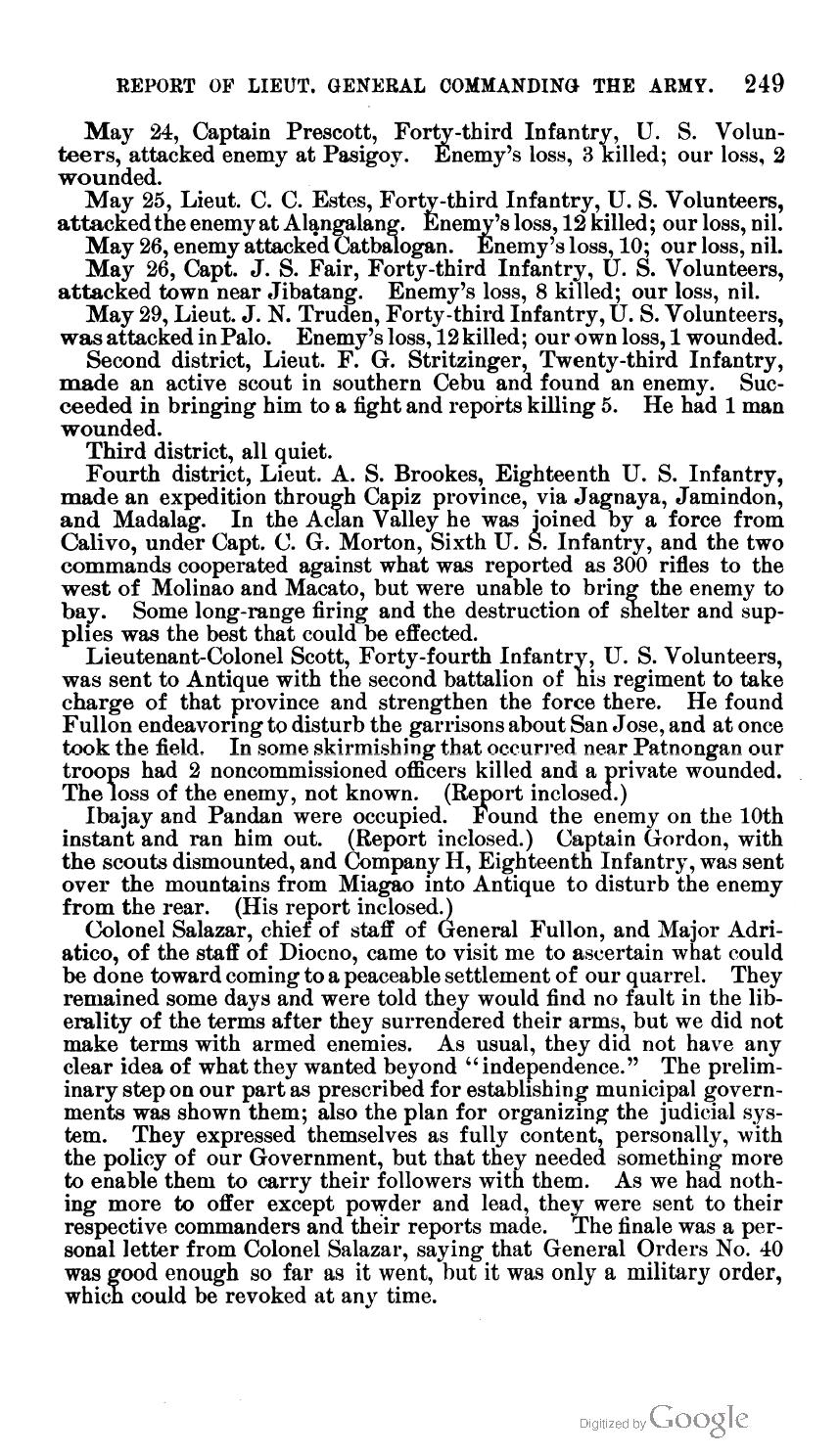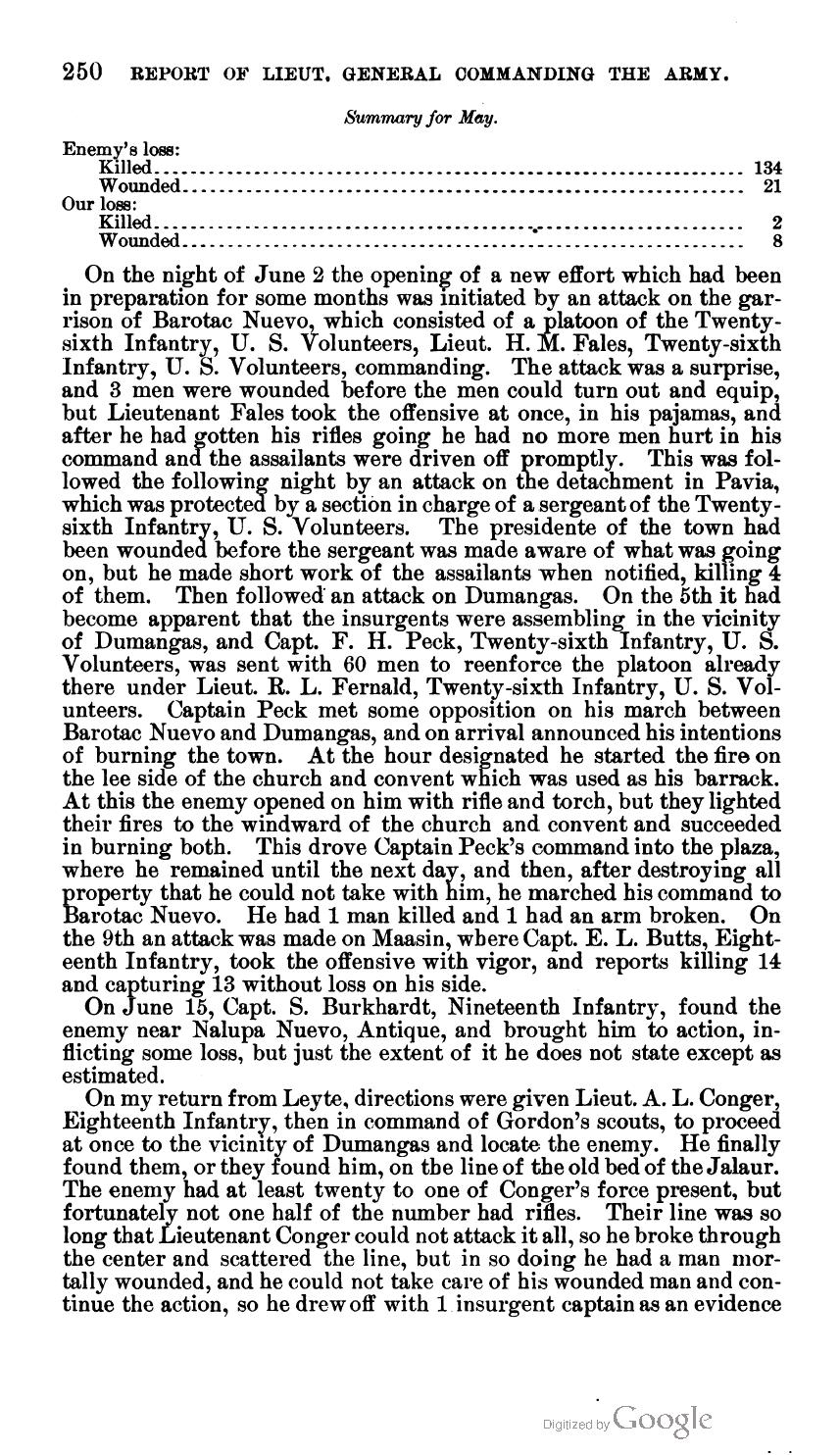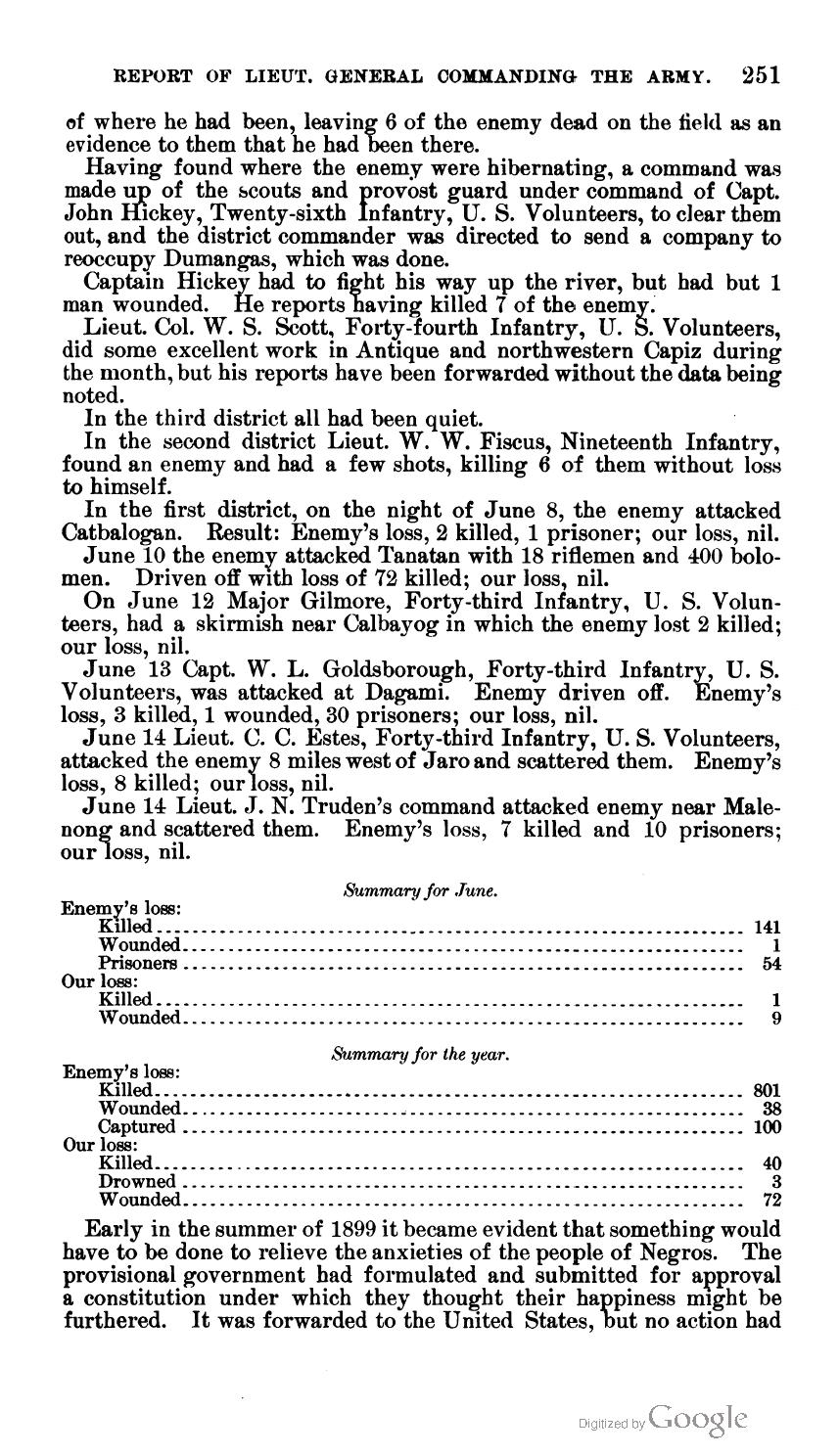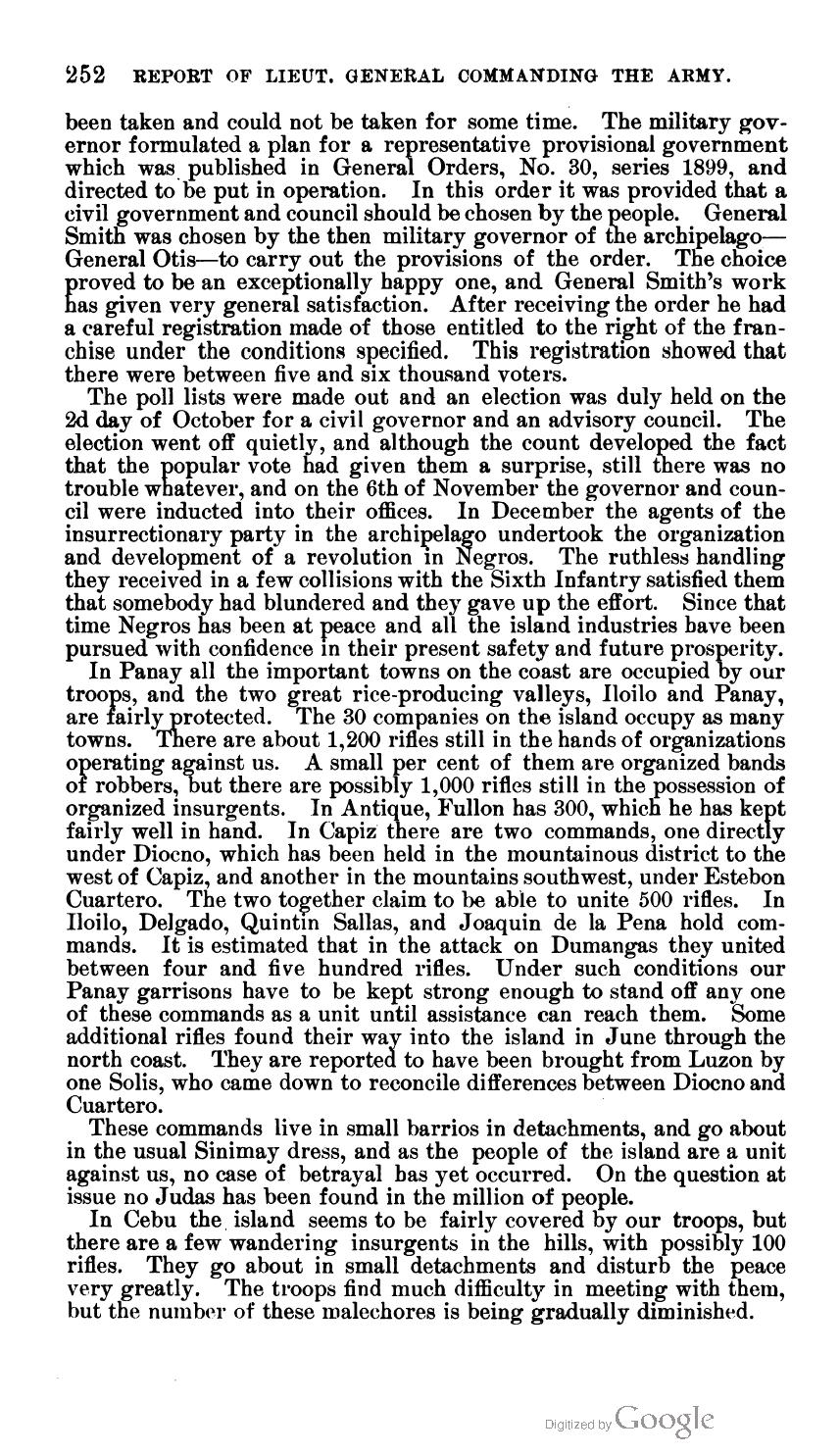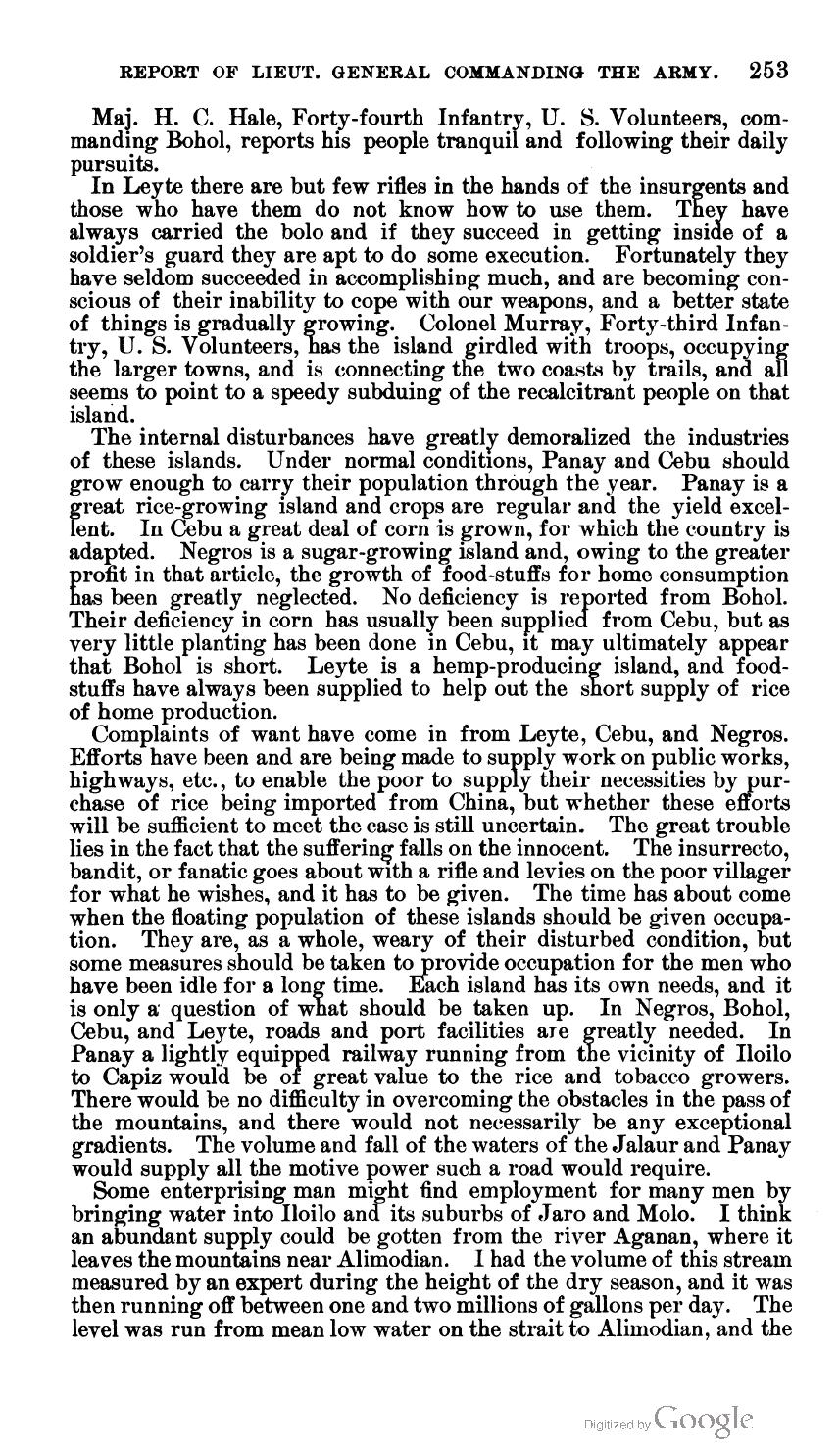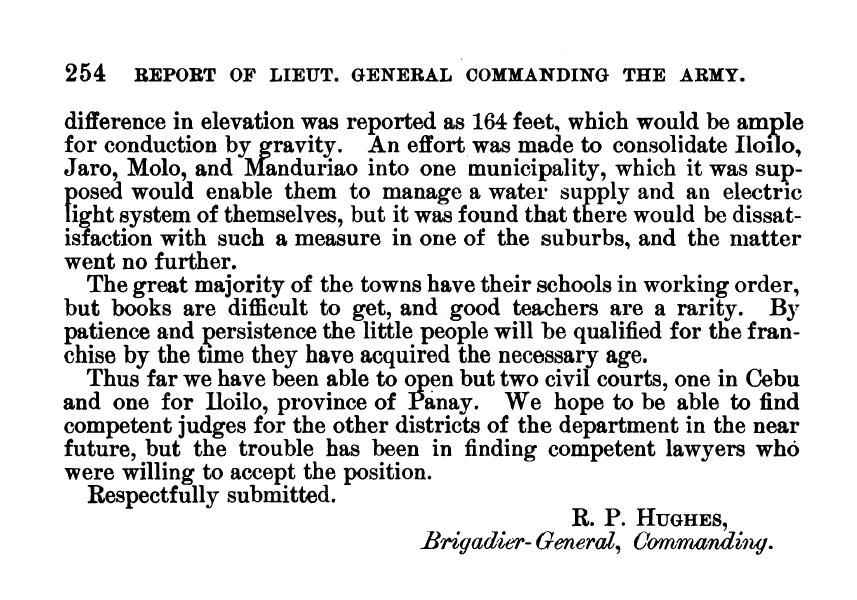235
troops a warm reception. The right rested, approximately, at Oton and extended over San Miguel, Pavia, Balantang, to the Iloilo Strait, the headquarters being in Santa Barbara.
It was proposed to try and swing around his right and push the crowd down into the manglares of the Dumangas district, and let the navy have a fair opportunity to assist in the good work. To carry this plan into execution it was arranged to send the First Battalion, Nineteenth Infantry, and Third Battalion, Eighteenth Infantry, under Major J. F. Huston, Nineteenth Infantry, by water to Tigbauan in the early night of November 9th, covered in landing by the Concord.
The Second Battalion, Nineteenth Infantry, and the First Battalion, Twenty-sixth Infantry, U. S. Volunteers, Lieutenant Ostheim's gun detachment and the supplies of both these commands, under the personal direction of Colonel Rice, were to march to Oton via Molo and Arevola. The headquarters, consisting of Captain William A. Mann, Seventeenth Infantry, Acting Adjutant General, First Lieutenant R. H. Van Deman, Twenty-first Infantry, aide-de-camp, Engineer Officer, First Lieut. W. H. Simons, 6th Infantry, Acting Ordnance Officer, and Gordon's Scouts, accompanied this command.
Colonel Carpenter, with the 1st and 2nd Battalions, 18th Infantry, and the battery of field guns, was to remain in Jaro
ready to move, and Lieutenant Colonel Dickman, with the 2d and 3d Battalions, 26th Infantry, U. S. Volunteers, was in readiness to assume the duties heretofore in charge of the 18th Infantry, and to support that command if called on. Careful calculation of distances and time had been made, and it was calculated that by noon of the l0th, these six battalions and eight guns could be in supporting distance on the general line, Alimodian, San Miguel and San Jose, connecting with the left of Colonel Dickman's command at Jibaoan. If this movement was successfully executed, it was our expectation by night of that day to occupy a position facing Santa Barbara, the left being about Cabatuan and Carpenter's right near Sta. Teresa. After this movement was set in motion, and when too late to stop it, a typhoon of the most obstinate character visited the island, and although the commands reached the points assigned them for the next morning, it was found during the night that the flood of water poured on us had dissolved the hardened stratum of the roads, and that there was no bottom below that could be reached by man or beast. When this change in conditions became apparent a dispatch was sent by courrier to Major Huston and Colonel Carpenter to stop their movement. The messenger sent to Major Huston overtook him near Cordova and he returned with his command to Tigbauan. The messenger sent to connect with Colonel Carpenter, by telephone and telegraph from Molo, did not succeed in getting his message to him until he had moved out, but it overtook him near Manduriao.
Company —, Twenty-sixth Infantry, U. S. Volunteers, was sent out by Colonel Dickman to drive in an outpost of the enemy stationed on the right of the road leading from Manduriao to Jibaoan. When Colonel Carpenter reached that vicinity, his two battalions deployed and assisted in clearing the enemy out. His report is forwarded, which shows a loss of one man of the Twenty-sixth Infantry, U. S. Volunteers, seriously wounded. Enemy's loss, 2 killed, 2 wounded and 3 captured and 1 rifle captured, together with 2,000 rounds of ammunition taken. His wagons had not been able to get a mile from Jaro,
|
|
